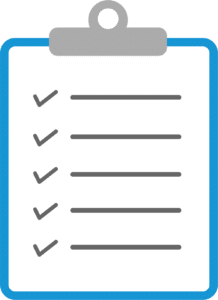5 Scary Don’ts for Web Performance (and How to Address Them)
In a recent blog post, we shed light on the undeniable importance of prioritising web performance, especially for transactional websites like eCommerce. The response to our discussion was positive, but we also received questions from readers seeking more guidance on how to effectively address web performance.
Below is a list of 5 do’s and don’ts which can help you navigate the landscape of web performance, ensuring that your site not only loads faster, but also delivers an exceptional user experience that can significantly impact your success in the online marketplace.
Don’ts

Measure performance locally
Running website performance tests on your local machine is not recommended and can lead to inaccurate outcomes. It’s important to remember that your customers may not all have high-end devices or access to high-speed internet connections, which can significantly impact their real-world experiences. Test on slow hardware, regulary.

Assume performance testing is someone else’s job
For some teams, performance is often seen as the inherent responsibility of developers, as it aligns with their expected roles and responsibilities. In contrast, specific organisations have specialised QA teams tasked with performance testing. Conversely, there are those who assert that performance is primarily the domain of back-end API engineers and may not be a primary focus for front-end teams. Educate everyone.

Rely only on Google data
Although Google data is a valuable starting point and offers valuable insights into your performance relative to competitors, it exclusively assesses performance in Google browsers. Some teams may also primarily develop and test their alterations using Google browsers, potentially creating a misleading sense of confidence in performance. This approach overlooks crucial information about your site’s performance in diverse customer environments. Implement RUM.

Fix and Forget
Avoid turning performance improvement into an epic or an unending project, as it may never reach completion. While it’s essential to initiate a project, establish clear boundaries and specific objectives for improvement. Break it down into manageable phases by prioritising the most valuable performance enhancements. Update your ways of working.

Forget why you are doing this
Are you trying to retain your customers, increase the basket size or attract new customers? Understand the customer journey, their goals and optimise those paths for performance.
Do’s
 Start today
Start today
Examine the current performance of your website and its key pages. Publicly accessible data is readily available for the majority of websites and pages, offering insights into their performance and allowing you to make competitive comparisons.
 Know your core customer journeys
Know your core customer journeys
Enhancing the speed of an underperforming page can be a relatively straightforward task, but does it align with your crucial customer journey elements that yield the greatest value? Gain insights into the routes your customers follow and optimise them for maximum returns.
 Embed performance into your teams
Embed performance into your teams
Performance on the web is a collective responsibility. It’s crucial for every team member to recognize its significance and collaborate to enhance the application. This requires the active participation of developers, designers, testers, and product managers in the process of optimising performance.
 Invest in RUM
Invest in RUM
Real User Monitoring (RUM) stands as the sole genuine method for gauging your website’s performance. It offers a real-world perspective on your actual customer experience, pinpointing areas that require your concentrated efforts.
 Create alerts
Create alerts
To prevent any decline in site performance, continuous monitoring is essential. Once you have this in place, setting up alerts becomes a straightforward process to detect any changes that may lead to decreased performance. There’s no need to wait until your site reaches your desired performance level; measure it now and implement alerts immediately to promptly identify any future degradation.
If you’ve got any tips of your own or you are interested in how you can start improving your website performance, get in touch to find out how we can help.
There’s no denying that times are tough for e-commerce businesses. Faced with high inflation, dwindling budgets and a soaring cost of living, 2023 could be the worst year for the global economy in more than four decades.
Retailers need to make smart decisions to remain competitive, or risk falling prey to the economic downturn.
Investing modest amounts in web performance is an almost guaranteed way to incrementally improve e-commerce revenue making it a safe bet for e-commerce leaders in the current economic climate.
How do organisations typically compete?
To remain competitive, retailers must retain existing customers while enticing new shoppers. When faced with this challenge they can either:
- Spend money to increase the volume of customers entering the sales funnel, or
- Concentrate on new products and enhancements to retain existing customers
SEO and PPC
The most common technique for attracting new customers is investing in pay per click (PPC) advertising and search engine optimisation (SEO). A recent survey by Retail Week found that 86% of retailers are currently investing in PPC, while 84% are spending on SEO.
While these tactics can increase website traffic and visibility, they can be costly and don’t always result in meaningful sales conversions.
Building new product offerings and enhancements
Some retailers are investing in innovative technologies such as AI to be more competitive. Certainly, adding AI can deliver an enhanced customer experience but these investments can be extremely expensive, take a long time to deliver, and a lack of efficient market testing can make innovation a high-risk strategy with long timelines to deliver ROI.
The conversion challenge
Today the typical conversion rate (from entering the funnel post-acquisition to actually completing a purchase) for an ecommerce site ranges from 1% to 4%.

Rather than increasing spend on marketing, with the intention of increasing the number of people entering the funnel, it can be more cost effective to improve the conversion rate by addressing the web performance of the site.
A study conducted last year delved into the impact of web performance on conversion rates. It revealed that the highest e-commerce conversion rates were seen when page load times were between one and two seconds, decreasing significantly as page load times increased to three seconds and beyond.
Equal Experts recently studied 100 e-commerce sites, and found that average page load time was more than three seconds. Reducing this page load time would significantly increase conversion rates without needing to increase marketing spend.
Of course, page load times are just an illustrative metric – what really matters is the customer’s experience. Analysing and optimising the customer journey can increase both user satisfaction and engagement.
What is important is that e-commerce sites implement and prioritise effective strategies to improve web performance. This will increase sales conversion rates and enhance customer satisfaction.
How better web performance drives sales

Improving website performance doesn’t require a six month project or a dedicated team. You can make significant changes using existing resources and optimising key elements.

If you have concerns about web performance relating to any of your systems/products, get in touch to find out how we can help.
The inconvenient truth is that most big data projects fail to deliver the expected return on investment. In fact, Gartner predicts that only 15% of data projects utilising AI in 2021-2022 will be successful.
Companies are spending more than ever on data and analytics projects, often using cutting-edge AI and machine learning tech – but many of them don’t generate the ROI that the business expected. In fact, a recent ESI ThoughtLab study of 1,200 organisations found that companies are generating an average ROI of just 1.3% from AI data projects, while 40% don’t generate a profit at all.
There are lots of reasons why this happens. Sometimes, the expectations of data projects are too high. But more often, companies embark on data projects without a clear strategy and without appropriate skills and resource to replicate the benefits of a pilot project at scale. AI projects require time, expertise and scale to deliver a decent ROI.
This might come as a surprise to some early project teams. Building a proof-of-concept AI data project can be relatively easy – if you have a team of skilled data scientists, a small project could be ready to test in a few months. The challenge comes when organisations try to scale up those prototypes to work in an enterprise setting.
If your data scientists don’t have the appropriate software development skills, then you could end up with a machine learning model that works in principle but isn’t fully integrated into workflows and enterprise operations – meaning it’s not collecting, sharing or analysing the intended data.

Enterprises need to ensure that they have the skills needed to make machine learning models work within their business. This might mean creating an app or integrating machine models with existing sales platforms.
When a global online home retailer developed a machine learning model to improve the efficiency of logistics, they soon realised that this was only the first step. Data scientists had created a model that was able to predict which warehouse and logistics carrier would be the most efficient for individual projects based on the product size and likelihood of sale in a particular region.
Our development team was able to help take the project to the next step, by creating ways to integrate this model into existing systems and automate the data collection process. The result is a system that can advise the business which proportion of a product to store in a particular warehouse, and which carrier to use to cut 5% from shipping costs, for example.
To increase your chances of creating positive ROI from data-enabled AI projects, organisations need to ensure they have the right skills in project teams – in addition to data scientists, you will need engineers, process owners and strong DevOps.
Second, ensure that you are measuring ROI over an appropriate timescale. The upfront costs involved in scaling data projects can result in flat ROI in the short-term. Data preparation, technology costs and people development are substantial expenses, and it takes an average of 17 months to show ROI, with firms surveyed by ESI showing a return of 4.3% at this stage.
Third, are you measuring the right things to accurately measure ROI? Capturing the cost savings from automated processes and data availability only tells half the story. By incorporating machine learning into the transformation of enterprise supply chains, logistics and product development, companies can drive increased revenue, market share, reduced time-to-market and higher shareholder value.
To find out more about how you can realise higher ROI from data investment, download our free Playbook here.
